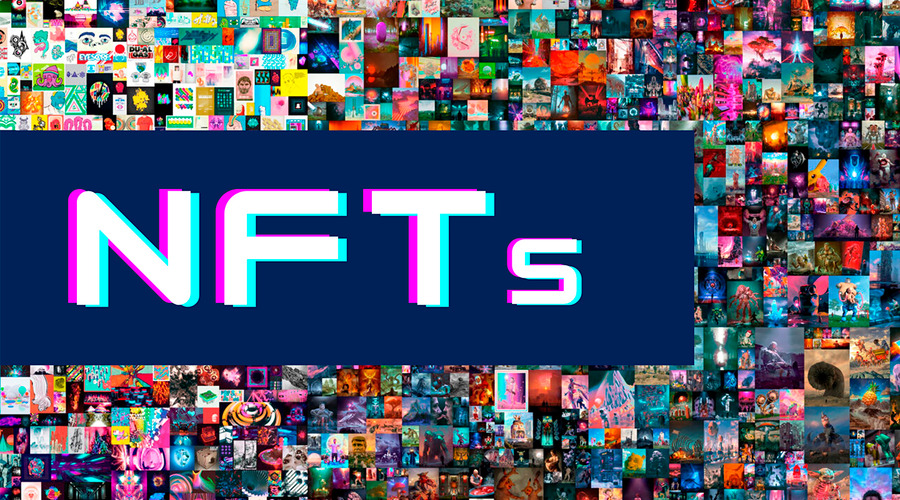Non-Fungible Tokens (NFTs) have taken the art world and digital marketplace by storm, revolutionizing the way people buy and sell digital assets. While many people focus on high-value sales and celebrity-endorsed auctions, NFTs have also created unique opportunities for social justice causes. This article explores how NFTs are used for social justice causes, their potential impact on activism, and how they can create lasting change.
Understanding NFTs
Before we delve into the intersection of NFTs and social justice, let’s define what NFTs are and how they work. NFTs are unique digital assets that are verified on a blockchain, a decentralized digital ledger that records transactions. Non-fungible tokens are unique digital assets that cannot be replicated or exchanged for an identical asset, unlike fungible assets like Bitcoin.
NFTs and Social Justice
The intersection of NFTs and social justice causes has been gaining momentum. One of the most significant ways NFTs can be used for social justice is through fundraising. By creating unique NFTs, organizations and activists can auction off these digital assets, with the proceeds going towards a specific cause. In this way, NFTs have the potential to raise significant funds for social justice causes.
Examples of NFTs for Social Justice
Several organizations and activists have already started using NFTs to raise awareness and funds for social justice causes. Here are a few notable examples:
Black Lives Matter
In 2020, artist Jaishri Abichandani created a set of four NFTs titled “I Can’t Breathe” to raise funds for Black Lives Matter. Each NFT features a portrait of a person who lost their life due to police brutality, including George Floyd, Breonna Taylor, Eric Garner, and Philando Castile. The auction of these NFTs raised $27,500, with the proceeds going to Black Lives Matter and the Bail Project.
LGBTQ+ Rights
The Trevor Project, a non-profit organization focused on suicide prevention for LGBTQ+ youth, created an NFT featuring an animated Pride flag. The auction of the NFT raised over $36,000, with the proceeds going towards the Trevor Project’s life-saving services.
Climate Change
In 2021, artist Krista Kim created an NFT titled “Mars House” to raise awareness about climate change. The NFT features a virtual house on Mars and was sold for $500,000, with the proceeds going towards supporting sustainable energy initiatives.
Challenges and Criticisms of NFTs on Social Justice
- Exclusivity: High-value sales of NFTs can create a perception of exclusivity, which goes against the principles of social justice.
- Accessibility: The high cost of NFTs can make them inaccessible to many people, potentially excluding some groups from being able to participate in the use of NFTs for social justice.
- Environmental impact: The energy consumption associated with blockchain technology, on which NFTs are built, has been criticized for its negative impact on the environment.
- Ethics: It is important to ensure that the use of NFTs for social justice remains ethical and does not exploit or tokenize marginalized communities.
- Unregulated market: The NFT market is largely unregulated, which can create the potential for fraud and manipulation.
- Limited impact: While NFTs can raise funds and awareness for social justice causes, some argue that they have limited impact in creating lasting change.
- Prioritizing profit: Some critics argue that the commercialization of NFTs for social justice may prioritize profit over the actual cause, leading to a dilution of the message and purpose.
Potential Impact of NFTs and Social Justice on Activism
Beyond fundraising, NFTs also have the potential to impact activism in new and innovative ways. For example, NFTs can be used to create digital protest art, which can be shared on social media to raise awareness about social justice issues. NFTs can also create a sense of ownership and community around social justice causes. People can own and display unique digital assets that represent their support for a specific cause.
Collaborations Between Artists and Activists

Another exciting aspect of NFTs for social justice is the potential for collaborations between artists and activists. By combining the creativity and vision of artists with the expertise and knowledge of activists, these collaborations can create powerful messages and mobilize support for social justice causes.
One example of such a collaboration is the “Earth Speakr” project, which artist Olafur Eliasson and the non-profit organization Earth Speakr created. The project aims to give children a voice on climate change by allowing them to record and share their messages through an app. The project also includes an NFT component, with the sale of NFTs helping to support the organization’s work.
NFTs and Reparations
NFTs provide a potential way to financially compensate historically oppressed and marginalized communities through the use of reparations. Creating and selling NFTs that represent the culture and art of historically oppressed and marginalized communities can raise funds to support reparations efforts.
One example of this is the “Black Wall Street” NFT collection, which artist Addie Wagenknecht created to commemorate the 100th anniversary of the Tulsa Race Massacre. NFTs in the collection represent the businesses and community of Black Wall Street, the prosperous Black community in Tulsa that was destroyed in the massacre. The sale of these NFTs raises funds for reparations efforts in Tulsa.
NFTs and Community Building
NFTs also have the potential to create and strengthen communities around social justice causes. By creating NFTs that represent a specific cause or community, individuals can own and display unique digital assets that represent their support and solidarity.
For example, the “We Are Royalty” NFT project aims to celebrate and uplift Black women and girls. The project features NFTs that represent iconic Black women, with a portion of the proceeds going towards supporting Black women and girls in education and entrepreneurship.
NFTs and Diversity in Art
NFTs can also provide a platform for promoting diversity in art by showcasing and monetizing the work of artists from underrepresented communities. By creating and selling NFTs that represent the art and culture of diverse communities, NFTs can help to challenge the traditional power structures of the art world and provide a new avenue for promoting and monetizing diverse art.
One example of this is the “Women of Crypto Art” NFT collection, which features NFTs representing the work of female-identifying artists in the crypto art space. The collection provides a platform for these artists to showcase and monetize their work, which may not have been recognized or supported in traditional art markets.
NFTs and Education
NFTs also have the potential to be used in education, providing a new way to engage students and promote learning. By creating and selling NFTs that represent educational concepts and materials, educators can provide students with a new way to learn and engage with the material.
One example of this is the “CryptoPunks Classroom” project, which uses NFTs to teach students about blockchain technology and cryptocurrency. The project provides students with a set of NFTs that represent the different components of a blockchain, allowing them to learn and explore the technology in a hands-on way.
NFTs and Human Rights
NFTs can also be used to promote and protect human rights by creating and selling NFTs that represent the struggle for justice and equality. By using NFTs to showcase and promote the work of human rights organizations and activists, NFTs can provide a new platform for amplifying their message and mobilizing support.
One example of this is the “Give a Voice” NFT project, which aims to support human rights activists and organizations in conflict zones around the world. The project features NFTs representing the stories and struggles of these activists, with a portion of the proceeds going towards supporting their work.
Conclusion
NFTs are a powerful tool for social justice causes, with the potential to create lasting change and empower marginalized communities. By addressing the challenges and criticisms associated with their use, we can harness their potential to create meaningful impact and mobilize support for important causes. As social justice advocates continue to evolve the use of NFTs, we can anticipate exciting ways to leverage this technology in creating positive change in the world.
FAQs
- What are NFTs?
NFTs are unique digital assets that are verified on a blockchain, a decentralized digital ledger that records transactions. NFTs, unlike fungible assets such as Bitcoin, are unique digital assets that cannot be replicated or exchanged for an identical asset. - How are NFTs being used for social justice?
NFTs are being used for social justice causes by creating unique digital assets that are auctioned off, with the proceeds going towards a specific cause. They are also being used to create digital protest art and to create a sense of ownership and community around social justice causes. - What are the challenges associated with NFT and social justice?
One criticism is that the high-value sales of NFT can create a perception of exclusivity, which goes against the principles of social justice. Additionally, the high energy consumption associated with blockchain technology, on which NFTs are built, has been criticized for its negative impact on the environment. - What are some examples of NFTs for social justice?
Some examples of NFT for social justice include Jaishri Abichandani’s “I Can’t Breathe” NFTs, which raised funds for Black Lives Matter, and the Trevor Project’s Pride flag NFT, which raised funds for the organization’s life-saving services. - How can NFTs be used to create lasting change for social justice causes?
NFT can be used to fundraise, create digital protest art, and create a sense of ownership and community around social justice causes. As their use continues to grow, it will be exciting to see how this technology can be leveraged to create meaningful change.

